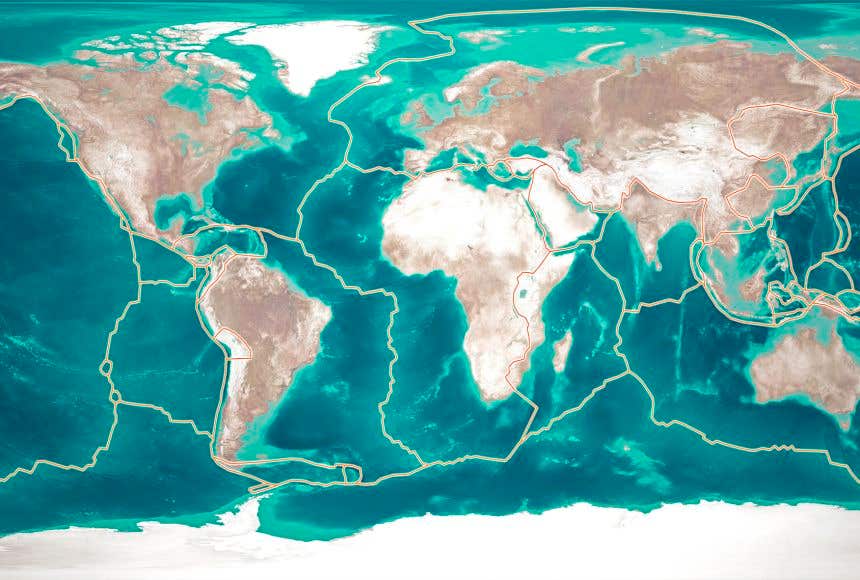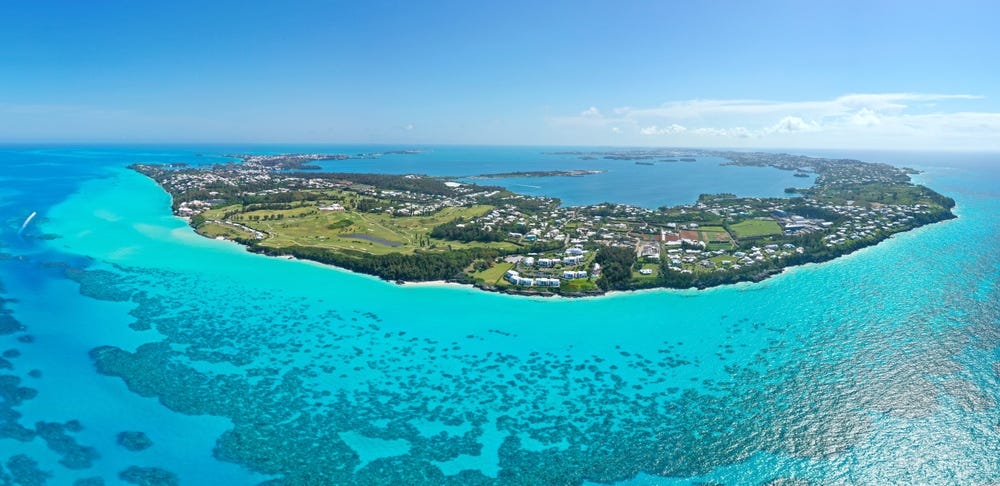New study challenges what we know about how Earth’s surface evolved
A new study shows Earth’s first crust already had features of modern continents, challenging the timeline for tectonic plate formation.

The movement of Earth’s tectonic plates shape the planet’s surface. This three-dimensional image shows a map of Earth’s tectonic plates. (CREDIT: Naeblys)
Earth’s earliest crust may have looked a lot more like the continents we know today than scientists once believed. A recent study shakes up old ideas about how Earth's surface evolved, showing that the unique chemical features of our continents may have formed long before plate tectonics even began.
This new research challenges one of geology’s biggest assumptions: that subduction—where tectonic plates dive beneath one another—is the only way to create Earth’s continental chemical fingerprint. If that fingerprint already existed billions of years ago, the story of our planet's early development needs a major rewrite.
A discovery that rewrites early Earth history
In a study published in Nature, scientists revealed that Earth’s first crust, called the “protocrust,” likely carried the same chemical traits as today’s continental crust. This crust formed about 4.5 billion years ago, during the Hadean eon, a time when Earth’s surface was still covered in a deep ocean of molten rock.
Professor Simon Turner, who led the research team, explains: “Scientists have long thought that tectonic plates needed to dive beneath each other to create the chemical fingerprint we see in continents. Our research shows this fingerprint existed in Earth’s very first crust, the protocrust—meaning those theories need to be reconsidered.”
Working with experts from MacQuarie University, Turner and his team built advanced computer models to simulate what Earth was like just after its formation. They recreated conditions that existed when Earth’s core was still forming and a global magma ocean covered the planet’s surface.
What they found was unexpected. The models showed that even without plate tectonics, the molten rock would create crust with the same unique chemical features found in today’s continents.
Related Stories
Rethinking tectonics and the niobium puzzle
One of the key clues to understanding plate tectonics comes from an element called niobium. Rocks formed at subduction zones—where one tectonic plate slips beneath another—contain very little niobium. For decades, scientists tried to date the first appearance of low-niobium rocks to pinpoint when plate tectonics started.
But the results didn’t make sense. Each study showed different timelines. The data didn’t add up. “I began to wonder if we were asking the right question,” says Turner.
Instead of looking for when subduction started, the team asked how niobium behaved under early Earth conditions. Their models showed that during the formation of Earth’s core, niobium acted in a surprising way. It became “siderophilic,” which means it was attracted to metal. This caused niobium to sink into the forming core, leaving less of it behind in the crust.
This process created a natural “niobium anomaly”—a clear chemical sign scientists had thought only formed through subduction. But now, the team showed that this signature could have formed without tectonic movement at all.
Turner explains, “I realized there might be a connection between early core formation, high siderophile element patterns, and the infamous negative niobium anomaly observed in continental crust.” The missing niobium in the crust wasn’t the result of tectonics. It was a leftover feature from the earliest moments of Earth’s creation.
Earth’s ancient crust shaped by heat, impacts, and time
Once this early protocrust formed, it didn’t just sit still. It changed in many ways—some violent, some slow. Earth got slammed by large meteorites during its early history. These impacts shook and broke apart the crust, causing parts of it to melt and mix.
Chunks of the early crust likely peeled off and melted down, creating magma rich in silica—a key ingredient in today’s continental rocks. This reshaping helped build thicker crust in some places, forming the base of early continents.
As time went on, some of these thicker pieces moved sideways. This movement created molten areas between the crust blocks. These molten zones eventually cooled to form new crust, similar to today’s ocean floors.
Although plate tectonics had not fully started, these early movements and reshaping events gave Earth a head start. The early crust set the stage for the more complex tectonic activity that followed.
Meteor strikes and the spark of tectonics
Meteor strikes didn’t just break apart the crust. They may have also helped start tectonic activity. Each large impact could have triggered short bursts of plate movement. Over time, these movements became more frequent and better organized.
Around 3.8 billion years ago, the steady rain of meteorites began to slow. The early Solar System, once full of chaotic orbits, started to settle down. This gave plate tectonics the chance to become a self-sustaining process. Earth’s surface began to behave more like it does today, with plates shifting, colliding, and pulling apart over long periods.
“This discovery completely changes our understanding of Earth's earliest geological processes,” Turner says. “It also gives us a new way to think about how continents might form on other rocky planets across the universe.”
A new way to see Earth—and other worlds
The idea that Earth’s continents began forming without plate tectonics isn’t just a shift in Earth science. It opens the door to rethink how rocky planets develop in general. If chemical fingerprints like those found in Earth’s crust can form just from magma and core formation, then other planets might build continents too—even if they don’t have moving tectonic plates. This could change how scientists search for life on planets beyond our own.
Turner and his team have not only challenged a long-held belief—they’ve created a new foundation for future studies. Earth’s early crust may not have needed subduction to form. Instead, it might have carried the marks of its creation all along, born in fire, shaped by impacts, and refined through time.
Note: The article above provided above by The Brighter Side of News.
Like these kind of feel good stories? Get The Brighter Side of News' newsletter.



